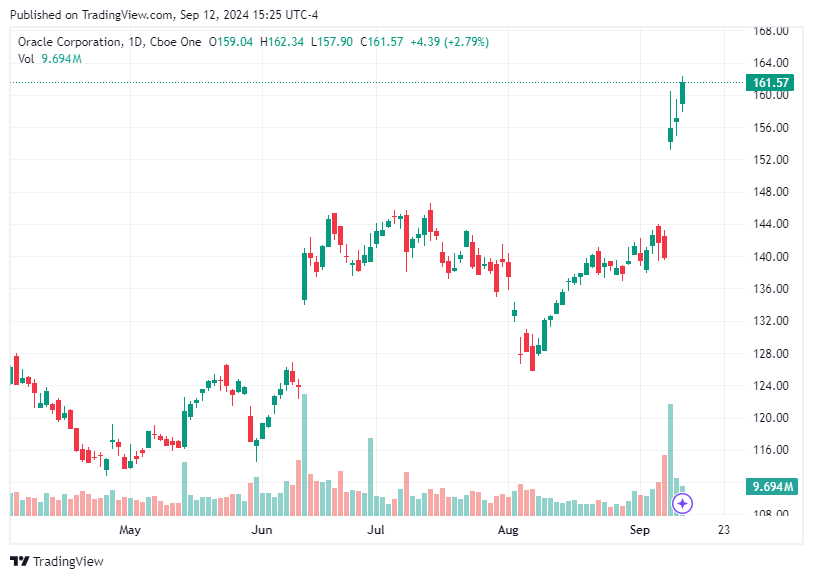Oracle (ORCL)
Q1 FY 2024 Results
We are catching up with the quarterly results for the expanding list of US companies we follow.
We wrote about Oracle in March and that report titled “Largest database vendor and second largest enterprise software company.” It can be found here. A latter report from June can be found here.

Introduction
Oracle (ORCL) is the largest global provider of database software and the second largest supplier of enterprise software. Oracle offers ~1,000 software products and has acquired over 140+ companies of all sizes and types. In general, apart from their database software and ecosystem, which was developed in-house, most of their other offerings were developed by companies acquired by Oracle.
ORCL used the vast cashflows from its very profitable database businesses to acquire many other companies including Peoplesoft, BEA Systems and Sun Microsystems among others.
Most companies of any size established before, say the year 2000, will be running Oracle Databases on on-premises infrastructure. While many workloads may have moved to the Cloud, for most established companies, moving core database infrastructure was too difficult to contemplate. Companies kept running them on their premises, locked-in to Oracle’s system and hostage to their frequent and aggressive price increases.
In the last two decades, there has been a huge growth in companies migrating their data and workloads to the Cloud where they are hosted by the hyperscalers. This is a pay as you go system. Investing upfront in large on-premises infrastructure is increasingly hard to justify.
ORCL initially dismissed the threat to its on-premises database business. In 2009, Oracle founder Larry Ellison used adjectives such “Fad," "Nonsense," and "Gibberish" to describe the Cloud.
In 2010, Amazon was already four years into AWS and Microsoft Azure became available for public use. Ellison’s scepticism started to wane in 2012. Oracle began to offer over 100 apps delivered in cloud-based software as a service model (SaaS).
This pivot has been successful and Cloud Revenues have grown strongly. The relevant division is called Oracle Cloud Infrastructure (OCI). ORCL describe OCI as follows:
“Oracle Cloud is the first public cloud built from the ground up to be a better cloud for every application. By rethinking core engineering and systems design for cloud computing, we created innovations that solve problems that customers have with existing public clouds. We accelerate migrations of existing enterprise workloads, deliver better reliability and performance for all applications, and offer the complete services customers need to build innovative cloud applications.”
They claim that given the number of software applications serving a wide range of business functions, the offering can be characterised as Software as a Service (SaaS). As Oracle offers a very wide range of software, it is also known as Platform as a Service (PaaS).
Oracle also ventured into the Infrastructure as a service (IaaS) market.
In IaaS, ORCL equips and operates datacentres for clients such as enterprises, service providers, government agencies and countries.
Oracle has always argued the big hyperscalers, especially AWS, are trying to impose a closed garden. That is, they want all the clients’ data and workloads just on their Cloud. Oracle argued clients prefer a hybrid cloud approach and want to use more than one provider. About two-thirds of companies use multiple clouds, according to a May 2021 report by Boston Consulting Group.
Fast forward to today, Oracle has established close partnership with all three large Cloud Hyperscalers and therefore can offer the hybrid cloud to their clients. In other words, clients can run all Oracle applications on the Hyperscalers’ Public Cloud.
The rest of this report is behind the paywall and only available to paying subscribers. Please do consider subscribing. The cost has been set at the lowest level permitted by Substack and is the equivalent of one cup of coffee a month.
Keep reading with a 7-day free trial
Subscribe to Long-term Investing to keep reading this post and get 7 days of free access to the full post archives.

